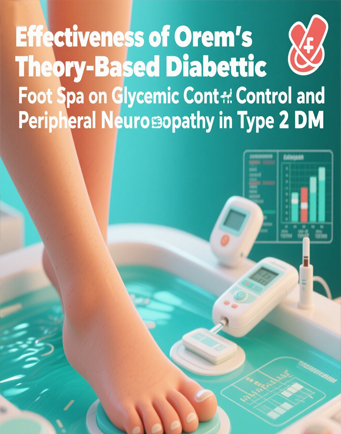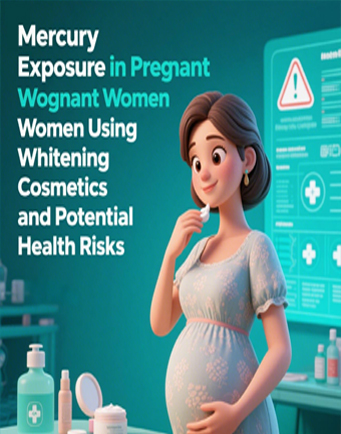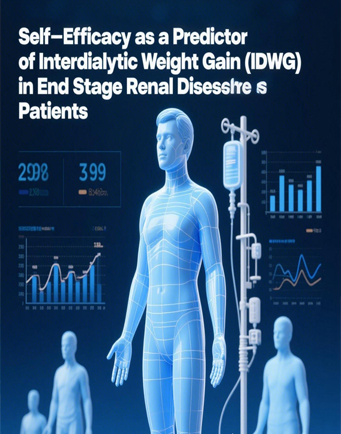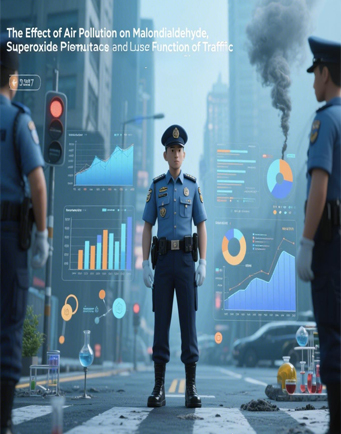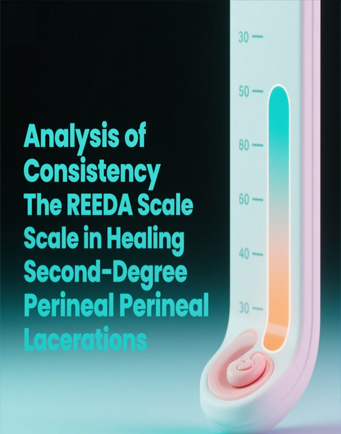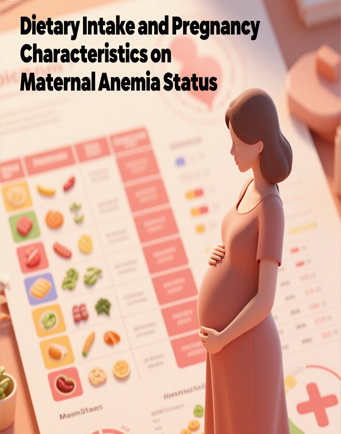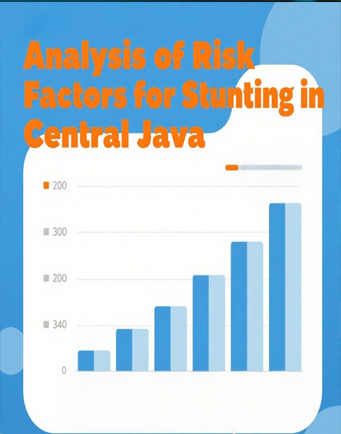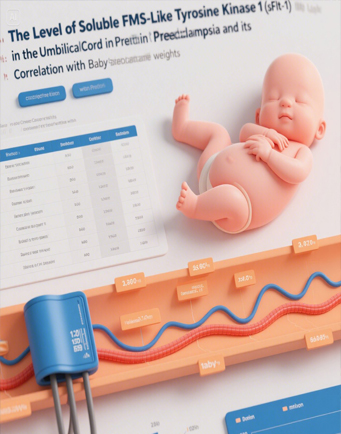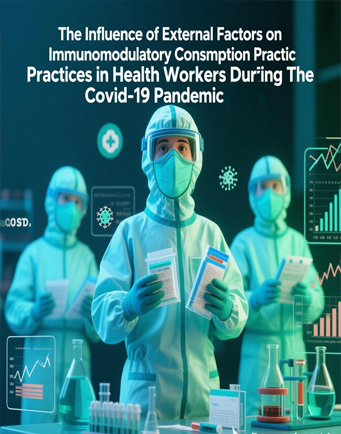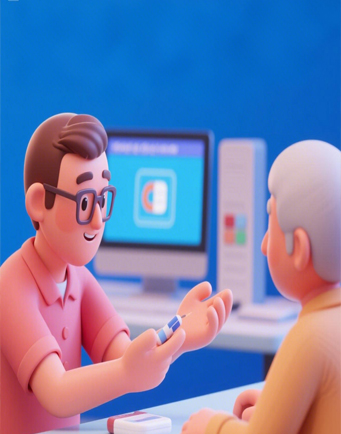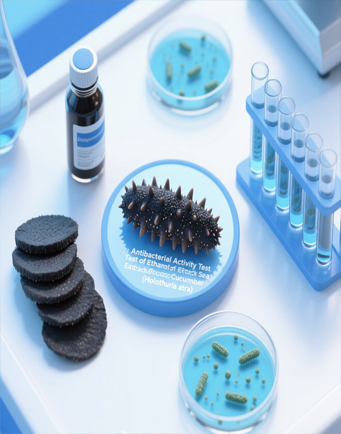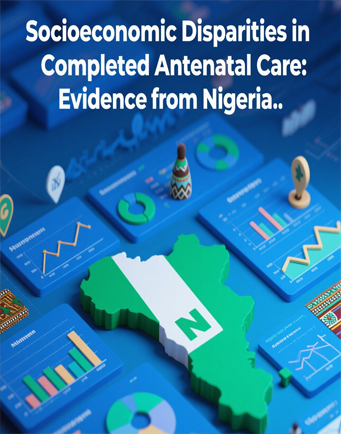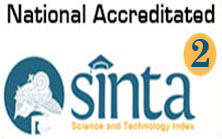Vitamins Sales Before and During the COVID-19 Pandemic at Network Online Pharmacies in Indonesia

Downloads
The use of vitamins and micronutrients as an immunity enhancer during the COVID-19 pandemic is needed. The use of vitamins and micronutrients as immunity boosters during the COVID-19 pandemic is very much needed. The description of vitamin needs can be predicted from vitamin sales carried out by network online pharmacies in Indonesia. Vitamins C and E are antioxidants that indirectly have a role as an antiviral. Vitamin D can increase immunity, so its availability is important during the COVID-19 pandemic. This study compares vitamin sales before and during the COVID-19 pandemic at online pharmacies in Indonesia as a description of vitamin use in the community, and their availability by the pharmaceutical industry so that the government can take policies to accelerate this period. The study began by taking master data of all vitamin sales from January 2019 to December 2020 at one of the online pharmacies in Indonesia. Data on all sales each year were grouped based on vitamin content, namely single vitamins, containing two vitamins, and multivitamins (more than two vitamins) and then compared them. Data analysis used the independent t-test, and if the data was not normal and homogeneous, it was processed using the Mann-Whitney test by SPSS version 26 software. The results showed that there was a significant difference between sales of vitamin C (p<0.05), vitamin E (p<0.01), a combination of vitamins B and C (p<0.05), vitamins B and E (p<0.05), and multivitamins (p<0.001) in online pharmacy networks in Indonesia before and during the COVID-19 pandemic. Interestingly, sales of vitamin D did not increase significantly during the COVID-19 pandemic due to limited supplies from pharmaceutical companies even though vitamin D is very important for increasing immunity, thus giving rise to the policy of the Indonesian Ministry of Health to utilize sunlight as the main source of vitamin D.
Abobaker, A., Alzwi, A., & Alraied, A. H. A. (2020). Overview of the possible role of vitamin C in management of COVID-19. Pharmacological Reports, 72(6), 1517–1528. https://doi.org/10.1007/S43440-020-00176-1
Al-Obaidi, Z. M. J., Hussain, Y. A., Ali, A. A., & Al-Rekabi, M. D. (2021). The influence of vitamin-C intake on blood glucose measurements in COVID-19 pandemic. Journal of Infection in Developing Countries, 15(2), 209–213. https://doi.org/10.3855/jidc.13960
Annweiler, C., Cao, Z., & Sabatier, J. M. (2020). Point of view: Should COVID-19 patients be supplemented with vitamin D? Maturitas, 140, 24–26. https://doi.org/10.1016/j.maturitas.2020.06.003
Aranow, C. (2011). Vitamin D and the immune system. Journal Investing Med, 59(6), 881–886. https://doi.org/10.3899/jrheum.090797
Arsyad, M., Alghifari, R. M., Susanto, A., Palloan, P., & Sulistiawaty. (2021). Analysis of Radiation Intensity and Sunshine Duration in the Karst Area of Maros TN Bantimurung Bulusaraung South Sulawesi During Solstice Phenomenon. Jurnal Penelitian Pendidikan IPA, 7, 199–204. https://doi.org/10.29303/jppipa.v7ispecialissue.1068
Arvinte, C., Singh, M., & Marik, P. E. (2020). Serum Levels of Vitamin C and Vitamin D in a Cohort of Critically Ill COVID-19 Patients of a North American Community Hospital Intensive Care Unit in May 2020: A Pilot Study. Medicine in Drug Discovery, 8(September), 100064. https://doi.org/10.1016/j.medidd.2020.100064
Bae, M., & Kim, H. (2020). The Role of Vitamin C, Vitamin D, and Selenium in Immune System against COVID-19. Molecules, 25(22), 1–12. https://doi.org/10.3390/MOLECULES25225346
Baltrusch, S. (2021). The Role of Neurotropic B Vitamins in Nerve Regeneration. BioMed Research International, 2021(July), 1–9. https://doi.org/10.1155/2021/9968228
Bradley, R., Schloss, J., Brown, D., Celis, D., Finnell, J., Hedo, R., Honcharov, V., Pantuso, T., Peña, H., Lauche, R., & Steel, A. (2020). The effects of vitamin D on acute viral respiratory infections: A rapid review. Advances in Integrative Medicine, 7(4), 192–202. https://doi.org/10.1016/j.aimed.2020.07.011
Calderón-Ospina, C. A., & Nava-Mesa, M. O. (2020). B Vitamins in the nervous system: Current knowledge of the biochemical modes of action and synergies of thiamine, pyridoxine, and cobalamin. CNS Neuroscience and Therapeutics, 26(1), 5–13. https://doi.org/10.1111/cns.13207
Carpagnano, G. E., Di Lecce, V., Quaranta, V. N., Zito, A., Buonamico, E., Capozza, E., Palumbo, A., Di Gioia, G., Valerio, V. N., & Resta, O. (2021). Vitamin D deficiency as a predictor of poor prognosis in patients with acute respiratory failure due to COVID-19. Journal of Endocrinological Investigation, 44(4), 765–771. https://doi.org/10.1007/s40618-020-01370-x
Cimke, S., & Gurkam, D. Y. (2020). Determination of interest in vitamin use during COVID-19 pandemic using Google Trends data: Infodemiology study. Nutrition, 85(December), 1–7. https://doi.org/10.1016/j.nut.2020.111138
Darbar, S., Saha, S., & Agarwal, S. (2021). Immunomodulatory role of vitamin C, D and E to fight against COVID-19 infection through boosting immunity: a review. Parana J Sci Educ, 7(1), 10-18.
Dos Santos, L. M. J. (2020). Can vitamin B12 be an adjuvant to COVID-19 treatment. GSC Biological and Pharmaceutical Sciences, 11(3), 001-005. https://doi.org/10.30574/gscbps.2020.11.3.0155
Earar, K., Arbune, M., Dorobat, C. M., Rusu-Negraia, M., Stefanescu, V., Schipor, O., Harabor, V. R., Harabor, A., & Bratu, A. M. (2020). Biochemical effects and therapeutic application of Vitamin C (C6H8O6) on covid-19 infection. Revista de Chimie, 71(5), 473–478. https://doi.org/10.37358/RC.20.5.8159
Entrenas Castillo, M., Entrenas Costa, L. M., Vaquero Barrios, J. M., Alcalá Díaz, J. F., López Miranda, J., Bouillon, R., & Quesada Gomez, J. M. (2020). “Effect of calcifediol treatment and best available therapy versus best available therapy on intensive care unit admission and mortality among patients hospitalized for COVID-19: A pilot randomized clinical study.” Journal of Steroid Biochemistry and Molecular Biology, 203(July). https://doi.org/10.1016/j.jsbmb.2020.105751
Food and Drug Supervisory Agency - Republic of Indonesia. (2023). Food and Drug Supervisory Agency - Republic of Indonesia. POM AGENCY. Retrieved from: https://www.pom.go.id/new/view/more/pers/662/Penjelasan-Publik-Temuan-Produk-Vitamin-Ilegal-yang-Diedarkan-Melalui-E-Commerce.html
Geier, D. A., Kern, J. K., & Geier, M. R. (2018). A longitudinal ecological study of seasonal influenza deaths in relation to climate conditions in the United States from 1999 through 2011. Infection Ecology and Epidemiology, 8(1), 1474708. https://doi.org/10.1080/20008686.2018.1474708
Grant, W. B., Lahore, H., McDonnell, S. L., Baggerly, C. A., French, C. B., Aliano, J. L., & Bhattoa, H. P. (2020). Evidence that vitamin D supplementation could reduce risk of influenza and covid-19 infections and deaths. Nutrients, 12(4), 1–19. https://doi.org/10.3390/nu12040988
Hiedra, R., Lo, K. B., Elbashabsheh, M., Gul, F., Wright, R. M., Albano, J., Azmaiprashvili, Z., & Patarroyo Aponte, G. (2020). The Use of IV vitamin C for patients with COVID-19: a single center observational study. Expert Review of Anti-Infective Therapy, 18(12), 1–12. https://doi.org/10.1080/14787210.2020.1794819
João, J., Souza, A. C. R., Vasconcelos, A. R., Prado, P. S., & Pereira, C. P. M. (2020). Zinc, Vitamin D and Vitamin C: Perspectives for COVID-19 With a Focus on Physical Tissue Barrier Integrity. Frontiers in Nutrition, 7(March), 1–14. https://doi.org/10.3389/fnut.2020.606398
Juzeniene, A., Ma, L. W., Kwitniewski, M., Polev, G. A., Lagunova, Z., Dahlback, A., & Moan, J. (2010). The seasonality of pandemic and non-pandemic influenzas: The roles of solar radiation and vitamin D. International Journal of Infectious Diseases, 14(12), e1099–e1105. https://doi.org/10.1016/j.ijid.2010.09.002
Kwon, J. Y., & Kang, S. G. (2022). Changes in Vitamin D Status in Korean Adults during the COVID-19 Pandemic. Nutrients, 14(22), 4863. https://doi.org/10.3390/nu14224863
Lewis, E. D., Meydani, S. N., & Wu, D. (2019). Regulatory role of vitamin E in the immune system and inflammation. IUBMB Life, 71(4), 487–494. https://doi.org/10.1002/iub.1976
Ling, S. F., Broad, E., Murphy, R., Pappachan, J. M., Pardesi-Newton, S., Kong, M. F., & Jude, E. B. (2020). High-dose cholecalciferol booster therapy is associated with a reduced risk of mortality in patients with covid-19: A cross-sectional multi-centre observational study. Nutrients, 12(12), 1–16. https://doi.org/10.3390/nu12123799
Mendy, A., Apewokin, S., Wells, A. A., & Morrow, A. L. (2020). Factors Associated with Hospitalization and Disease Severity in a Racially and Ethnically Diverse Population of COVID-19 Patients. MedRxiv, 1-24. https://doi.org/10.1101/2020.06.25.20137323
Merzon, E., Tworowski, D., Gorohovski, A., Vinker, S., Golan Cohen, A., Green, I., & Frenkel-Morgenstern, M. (2020). Low plasma 25(OH) vitamin D level is associated with increased risk of COVID-19 infection: an Israeli population-based study. FEBS Journal, 287(17), 3693–3702. https://doi.org/10.1111/febs.15495
Michele, C. A., Angelo, B., Valeria, L., Teresa, M., Pasquale, D. L., Giuseppe, C., Giovanni, M., Michele, D. P., Ernestina, P., & Mario, B. (2020). Vitamin supplements in the Era of SARS-Cov2 pandemic. GSC Biological and Pharmaceutical Sciences, 11(2), 007–019. https://doi.org/10.30574/gscbps.2020.11.2.0114
Li, R., Wu, K., Li, Y., Liang, X., Tse, W. K. F., Yang, L., & Lai, K. P. (2020). Revealing the targets and mechanisms of vitamin A in the treatment of COVID-19. Aging, 12(15), 15784–15796. https://doi.org/10.18632/aging.103888
Murdiana, H. E., Putri, M. K., Rahmawati, D., & Kurniawati, A. Y. (2022). Indonesian Traditional Medicine : The Use Befor and During The COVID-19 at Online Pharmacy Networks In Indonesia. INTEREST :Jurnal Ilm Kesehatan, 11(1), 126–137. https://doi.org/10.37341/interest.v0i0.497
Nawaiseh, H. K., Abdelrahim, D. N., Al-Domi, H., AL-Assaf, M. S., & AL-Nawaiseh, F. K. (2023). The impact of vitamin D, vitamin C, and zinc supplements on immune status among Jordanian adults during COVID-19: cross-sectional study findings. BMC Public Health, 23(1), 1–10. https://doi.org/10.1186/s12889-023-17172-8
Octavianti, A., Muliadi, M., & Apriansyah, A. (2018). Estimasi Intensitas Radiasi Matahari di Wilayah Kota Makassar. Prisma Fisika, 6(3), 152–159. Retrieved from: https://jurnal.untan.ac.id/index.php/jpfu/article/view/28711
Pae, M., & Wu, D. (2017). Nutritional modulation of age-related changes in the immune system and risk of infection. Nutrition Research, 41, 14–35. https://doi.org/10.1016/j.nutres.2017.02.001
Philipp, S., Claudia, G., & Ulrich, K. (2021). Supplementation of the population during the COVID-19 pandemic with vitamins and micronutrients – How much evidence is needed? Swiss Medical Weekly, 151(19), 1–7. https://doi.org/10.4414/smw.2021.20522
Rustecka, A., Maret, J., Drab, A., Leszczyńska, M., Tomaszewska, A., Lipińska-Opałka, A., ... & Kubiak, J. Z. (2021). The impact of COVID-19 pandemic during 2020–2021 on the vitamin D serum levels in the paediatric population in Warsaw, Poland. Nutrients, 13(6), 1990. https://doi.org/10.3390/nu13061990
Shakoor, H., Feehan, J., Mikkelsen, K., Al Dhaheri, A. S., Ali, H. I., Platat, C., Ismail, L. C., Stojanovska, L., & Apostolopoulos, V. (2021). Be well: A potential role for vitamin B in COVID-19. Maturitas, 144(August), 108–111. https://doi.org/10.1016/j.maturitas.2020.08.007
Shreenidhi, S., & Arivarasu, L. (2020). Role of Multivitamin Supplements Among General Public During. European Journal of Molecular & Clinic Medicine, 07(01), 486–491. Retrieved from: https://www.ejmcm.com/archives/volume-7/issue-1/315
Stephensen, C. B., & Lietz, G. (2021). Vitamin A in resistance to and recovery from infection: Relevance to SARS-CoV2. British Journal of Nutrition, 126(11), 1663–1672. https://doi.org/10.1017/S0007114521000246
Tosato, M., Calvani, R., Picca, A., Ciciarello, F., Galluzzo, V., Coelho-Júnior, H. J., ... & Landi, F. (2022). Effects of l-arginine plus vitamin C supplementation on physical performance, endothelial function, and persistent fatigue in adults with long COVID: a single-blind randomized controlled trial. Nutrients, 14(23), 4984. https://doi.org/10.3390/nu14234984
Tosepu, R., Gunawan, J., Effendy, D. S., Ahmad, L. O. A. I., Lestari, H., Bahar, H., & Asfian, P. (2020). Correlation between weather and Covid-19 pandemic in Jakarta, Indonesia. Science of the total environment, 725, 138436. https://doi.org/10.1016/j.scitotenv.2020.138436
Tsugawa, N., Kuwabara, A., Ogasawara, H., Nishino, M., Nakagawa, K., Kamao, M., Hasegawa, H., & Tanaka, K. (2022). Vitamin D Status in Japanese Young Women in 2016–2017 and 2020: Seasonal Variation and the Effect of Lifestyle Including Changes Caused by the COVID-19 Pandemic. Journal of Nutritional Science and Vitaminology, 68(3), 172–180. https://doi.org/10.3177/jnsv.68.172
Visser, M. P. J., Walk, J., Vermeer, C., Bílková, S., Janssen, R., & Mayer, O. (2022). Enhanced vitamin K expenditure as a major contributor to vitamin K deficiency in COVID-19. International Journal of Infectious Diseases, 125, 275–277. https://doi.org/10.1016/j.ijid.2022.10.030
Werneke, U., Gaughran, F., & Taylor, D. M. (2021). Vitamin D in the time of the coronavirus (COVID-19) pandemic – a clinical review from a public health and public mental health perspective. Therapeutic Advances in Psychopharmacology, 11(June), 1–27. https://doi.org/10.1177/20451253211027699
World Health Organization. (2022). WHO Coronavirus (COVID-19) Dashboard. World Health Organization. Retrieved from: https://data.who.int/dashboards/covid19/cases
Copyright (c) 2025 JURNAL INFO KESEHATAN

This work is licensed under a Creative Commons Attribution-NonCommercial-ShareAlike 4.0 International License.
Copyright notice
Ownership of copyright
The copyright in this website and the material on this website (including without limitation the text, computer code, artwork, photographs, images, music, audio material, video material and audio-visual material on this website) is owned by JURNAL INFO KESEHATAN and its licensors.
Copyright license
JURNAL INFO KESEHATAN grants to you a worldwide non-exclusive royalty-free revocable license to:
- view this website and the material on this website on a computer or mobile device via a web browser;
- copy and store this website and the material on this website in your web browser cache memory; and
- print pages from this website for your use.
- All articles published by JURNAL INFO KESEHATAN are licensed under the Creative Commons Attribution 4.0 International License. This permits anyone to copy, redistribute, remix, transmit and adapt the work provided the original work and source is appropriately cited.
JURNAL INFO KESEHATAN does not grant you any other rights in relation to this website or the material on this website. In other words, all other rights are reserved.
For the avoidance of doubt, you must not adapt, edit, change, transform, publish, republish, distribute, redistribute, broadcast, rebroadcast or show or play in public this website or the material on this website (in any form or media) without appropriately and conspicuously citing the original work and source or JURNAL INFO KESEHATAN prior written permission.
Permissions
You may request permission to use the copyright materials on this website by writing to jurnalinfokesehatan@gmail.com.
Enforcement of copyright
JURNAL INFO KESEHATAN takes the protection of its copyright very seriously.
If JURNAL INFO KESEHATAN discovers that you have used its copyright materials in contravention of the license above, JURNAL INFO KESEHATAN may bring legal proceedings against you seeking monetary damages and an injunction to stop you using those materials. You could also be ordered to pay legal costs.
If you become aware of any use of JURNAL INFO KESEHATAN copyright materials that contravenes or may contravene the license above, please report this by email to jurnalinfokesehatan@gmail.com
Infringing material
If you become aware of any material on the website that you believe infringes your or any other person's copyright, please report this by email to jurnalinfokesehatan@gmail.com.


